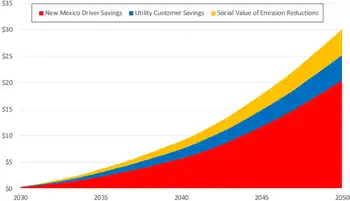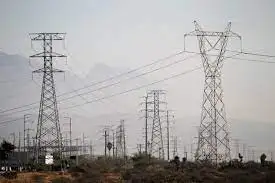Fish must be protected regardless of benefit analysis: judge
By CNS News
NFPA 70e Training
Our customized live online or in‑person group training can be delivered to your staff at your location.

- Live Online
- 6 hours Instructor-led
- Group Training Available
The Supreme Court disagreed, ruling on April 1 of this year that a cost-benefit analysis was entirely appropriate when judging whether a power company was following the law.
The case involved a section of the Clean Water Act that requires power companies that operate water-cooled power plants — such as nuclear power plants — to use “the best technology available for minimizing adverse environmental impact” to prevent fish and other aquatic life from being sucked into a plants’ cooling vents and killed.
Various environmental groups, including the celebrity-backed National Resources Defense Council, sued the EPA over its application of the best technology standard, arguing that power companies must use the best technology that money can buy to prevent aquatic life from being harmed.
Previously, the EPA had used a cost-benefit analysis in determining what constituted “the best technology available.” It examined the environmental benefits of different technologies against the cost to power companies and the effects of those costs on consumers.
Sotomayor, writing for the New York-based U.S. Court of Appeals for the Second Circuit, said that the case was about the fish, ruling that the EPA could only consider whether a power company was able to buy the technology, not whether it made economic sense to do so.
"This case is about fish and other aquatic organisms," wrote Sotomayor. "The flow of water into these plants traps (or 'impinges') large aquatic organisms against grills or screens, which cover the intake structures, and draws (or 'entrains') small aquatic organisms into the cooling mechanism; the resulting impingement and entrainment from these operations kill or injure billions of aquatic organisms every year.
"In determining BAT (Best Available Technology), by contrast, the EPA may consider cost as a factor to a limited degree, but only as to whether the cost of a given technology could be reasonably borne by the industry and not the relation between that technologyÂ’s cost and the benefits it achieves," Sotomayor concluded.
The EPA, she said, must first consider whether the industry could “reasonably” bear the cost of new technology and then conduct a cost-effectiveness analysis — which measures which technology meets the EPA requirements the cheapest, not which technology is most economical to install.
"EPA may permissibly consider cost in two ways: (1) to determine what technology can be ‘reasonably borne’ by the industry and (2) to engage in cost-effectiveness analysis in determining BAT,” wrote Sotomayor.
Cost, which gets passed on to customers as rate increases, can only be considered for technologies that meet EPA goals, rather than what effect it might have on the abilities of the power companies to produce electricity.
"Thus, the EPA must first determine what is the most effective technology that may reasonably be borne by the industry,” Sotomayor explained. “Once this determination has been made, the EPA may then consider other factors, including cost-effectiveness, to choose a less expensive technology that achieves essentially the same results.”
The Supreme Court disagreed. Justice Antonin Scalia wrote for the court that a cost-benefit analysis was entirely reasonable and that a cost-benefit analysis could be used to determine what is the “best available technology.”
“But ‘best technology’ may also describe the technology that most efficiently produces some good,” wrote Justice Scalia. “It seems to us, therefore, that the phrase ‘best technology available’ …does not unambiguously preclude cost-benefit analysis.”
The Supreme Court ruled that Sotomayor was in error and that the EPA could continue using a cost-benefit analysis when enforcing environmental regulations.
“We conclude that the EPA permissibly relied on cost-benefit analysis in setting the national performance standards,” Scalia wrote. “The Court of Appeals,” Scalia ruled, “was therefore in error.”
Steve Milloy, a lawyer, author, and founder of JunkScience.com, told CNSNews.com that Sotomayor’s decision was pure politics, saying it reflected Judge Sotomayor’s “blind political allegiance” to radical environmentalists.
“This was ultimately a political job, where a narrow interpretation of the law is going to help or be consistent with her politics — that’s what she’s going to do,” said Milloy. “Where a more expansive view is going to help with her politics, she’s going to adopt that. She’s going to find a way to side with whatever her political views are, regardless of the law.”
“This doesn’t have anything to do with the law or the environment,” said Milloy. “These are all political jobs now. I can only describe that [ruling] as blind political allegiance to the Greens.”











